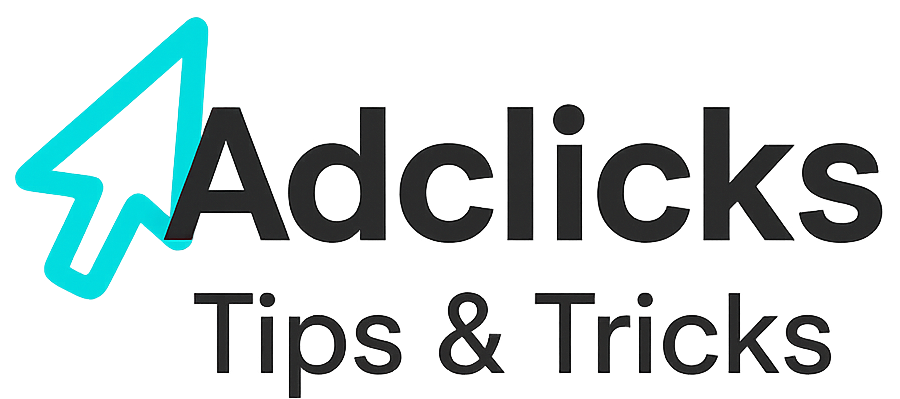When it comes to monetizing your website with Adclicks, it’s tempting to think that plastering every inch of your pages with ads will lead to more revenue. After all, the logic seems simple: more ads mean more chances for clicks, right? Unfortunately, this approach is more likely to harm both your user experience and your earnings. Understanding how to balance ad quantity and placement is crucial to maintaining a site that looks professional while maximizing ad performance.
The Pitfall of Overcrowding Your Pages
Overloading a page with Adclicks units often backfires. Visitors will see your page and immediately recognize it as an “ad farm,” with little genuine content. The result? Distrust and reduced engagement. People may scroll past or leave without reading anything meaningful, and any clicks that do occur are less valuable because the impression of desperation undermines ad quality.
Websites perform best when ads complement the content rather than dominate it. A few well-placed ads can outperform a dozen haphazardly scattered units. Prioritize strategic placement—sidebar, footer, and in-content ads—so that users encounter them naturally without feeling bombarded. This approach fosters trust and encourages meaningful interaction.
Unique Ad Codes Are Essential
A critical technical detail for Adclicks publishers is that every ad code on a page must be unique. Repeating the same code multiple times on a single page will result in only the first ad displaying, rendering additional units useless. While you can reuse codes across different pages—like a consistent sidebar ad or footer ad—each placement on a given page needs its own unique identifier.
Remember, you can have a maximum of five ads per page. Exceeding this limit doesn’t increase revenue; it simply wastes space and frustrates your visitors. The key is not the sheer number of ads but their strategic distribution and variety. Optimizing for five high-impact, clearly differentiated ad units is far better than cramming in ten identical codes and seeing only one appear.
Balancing Multiple Networks
Many publishers supplement Adclicks with units from other ad networks. This can work well if done judiciously, but the same principle applies: avoid overwhelming your audience. Combining networks can increase competition for attention, but it also risks slowing page load speed and cluttering the interface. Ensure each ad placement has a clear purpose, and always prioritize user experience over maximizing ad quantity.
Test placement carefully. For example, if your sidebar shows a permanent Adclicks unit site-wide, any additional ad space on the same page should differ in size or format to maintain clarity. This prevents your page from feeling repetitive while allowing multiple networks to coexist without cannibalizing one another’s performance.
In-Content Ads and Reader Engagement
Ads integrated naturally into content are often the highest performers. In-content placements, such as between paragraphs or at the end of articles, catch readers’ attention when they are already engaged. However, it is essential to vary your ad units to avoid ad blindness, where repeated identical units are ignored. Unique codes ensure each ad is recognized by the system as distinct, improving visibility and tracking accuracy.
Careful monitoring of engagement is also key. Use analytics tools like Rommie Analytics and StatCounter to track which placements generate clicks and which don’t. This data allows you to adjust the layout iteratively, creating a balance between visibility and user experience.
Sidebar, Footer, and Global Ad Placements
Not every page requires completely unique ad codes across the board. Sidebar ads, footers, and other site-wide units can be reused intelligently, giving your site a consistent look without violating the unique code requirement on individual pages. This consistency also helps with branding and user familiarity, making ads feel like part of the design rather than intrusive elements.
A strong rule of thumb: use distinct codes only where they appear together on a page. This allows for repeated branding across pages while maintaining functional uniqueness, optimizing both revenue tracking and display integrity.
Quality Over Quantity in Click Generation
The goal of any Adclicks campaign should not be to maximize ad count but to maximize meaningful engagement. Visitors will respond better to fewer, well-positioned, relevant ads than a page covered in multiple units. Overcrowding reduces perceived value and often leads to accidental clicks, which may not benefit you due to invalid click protections.
Consider content-first strategies. Ensure that your articles, videos, or interactive features provide value before integrating ads. When users trust your content, they are more likely to engage with ads voluntarily and meaningfully, increasing both click-through rate and revenue quality.
Testing and Iteration
Finally, continuous testing is crucial. Even if you think a layout is perfect, user behavior and ad performance can reveal otherwise. Test ad sizes, positions, and network combinations, and review analytics to refine your strategy. Metrics like engagement, click-through rate, and dwell time will guide your adjustments.
Using tools like Rommie and StatCounter together with Adclicks reporting can help you identify patterns and optimize ad placement. Pay attention to pages that outperform expectations and replicate their structure across your site. Small, informed tweaks are more valuable than adding more ads blindly.
“More is always better” is a tempting mantra, but when it comes to Adclicks, less really can be more. By focusing on strategic ad placement, unique codes, a maximum of five units per page, and careful use of other networks, you can increase both user satisfaction and revenue. Pair this with analytics to monitor performance, and you’ll build a site that is profitable, user-friendly, and compliant with Adclicks best practices.
Relevant Links
Support: https://support.snipesearch.co.uk/
FAQ: https://adclick.snipesearch.co.uk/index.php?page=index/faq
Contact Form: https://adclick.snipesearch.co.uk/index.php?page=user/support
Stay Connected:
Snipesocial: https://www.snipesocial.co.uk/pages/snipesearch
Twitter: https://twitter.com/snipesearch_uk
Facebook: https://facebook.com/snipesearch
LinkedIn: https://linkedin.com/company/snipesearch/
YouTube: https://youtube.com/@snipesearch




